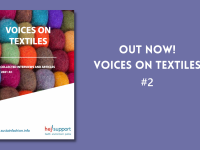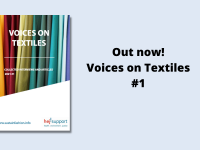How Fashion Companies Provide Sustainability Information to Consumers

by HEJSupport
The sustainability of the fashion industry largely depends on the work of regulators and product manufacturers, including their suppliers. However, very often their work is not enough and the role of the consumers is much needed to be part of the efforts and movement to help encourage both industry and regulators to ensure product sustainability.
HEJSupport analyzed the provision of product sustainability information from various brands, using the UN-Environment and ITC 2017 Guidelines for Providing Product Sustainability Information. For the first time, these guidelines function as an analyzing tool for an entire industry sector.
The analysis shows that although textile and fashion brands invested in more sustainable production, there is a lack of communication with consumers. Their needs in terms of sustainability are being largely ignored. Some of the analyzed labels show lack of relevance, reliability, clarity and transparency.
The textile and fashion industries are among the largest industries in the world. Their supply-chain includes agriculture, manufacturing and processing as well as fabric care, use, recycling and disposal. Nearly all countries are involved in manufacturing of textile products, though the actual involvement can vary from textile and product design and development of manufacturing technologies, to actual production and shipping to numerous locations. However, all countries face the growing problem of textile waste management, which is directly linked to unsustainable textile production and use.
Being one of the largest the contributors to pollution, the fashion and textile industry must explore strategies geared towards improving sustainability in order to minimize pollution, improve the safety of workers, eliminate sexual abuse and ensure the rights of consumers to make informed choices. The future of sustainable textiles and fashion largely depends on the industry’s ability to reduce the use of resources such as land, water and fossil fuels, and to ensure products are reused and recycled to minimize waste.
Other aspects of sustainability that the textile and fashion industries focus on include protection of the environment and human health, occupational safety, gender equity and women’s empowerment, as well as meeting the demand of consumers for eco-friendly textile products.
The report “Sustainable Fashion? How companies provide sustainability information to consumers” by HEJSupport touches upon gaps in the current provision of product sustainability information to consumers, with the aim of suggesting a way forward which makes consumers a driving force helping to shape the future of sustainable textiles.






